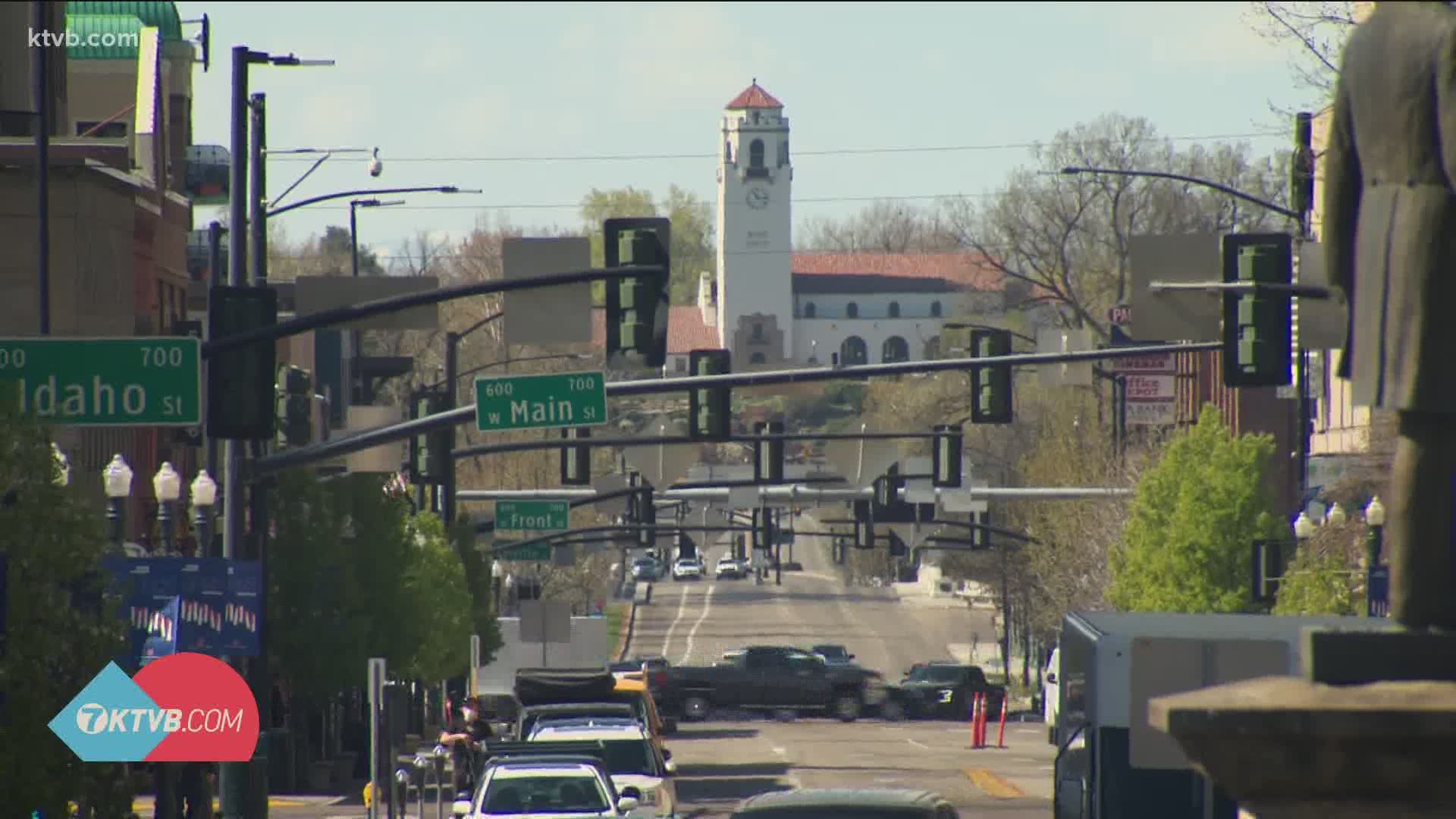BOISE, Idaho — On April 16, 1925, the Boise Depot opened to the public, forever changing the face of Boise. The now-iconic landmark shifted train routes and better connected the City of Trees to the rest of the Pacific Northwest and changed how city leaders wanted to showcase the capital city to travelers, spurring a new layout for the city.
According to Boise Parks and Recreation Director Doug Holloway, the Boise Depot is an iconic symbol for the city.
"I think when you think of Boise you think of a couple of different iconic structures that we have here. One is the Gene Harris bandshell located in Julia Davis Park and the other is the Depot," he said.
Holloway added that the Boise Depot is one of the most picturesque views in the whole city and arguably the most picture-taken place in Boise.
According to Brandi Burns, the history programs manager for the City of Boise, the Boise Depot wasn't the first main station in town.
"We technically had three depot locations," she explained. "The very first was a wood-framed building that was up here on the bench, not quite in this same location close. And then we had a downtown depot that was made of sandstone and then this one was built in 1925."
On April 16, 1925, the Boise Depot was open to the public and featured parades, live bands, and even costume parties.
"Supposedly there were so many people here that people had to sleep on cots in hallways at the hotels," Burns said.
She added that the Salt Lake Tribune reported on the following day that Boise "has been a city reflecting the finest in contentment and even though one had to change to a branch line, the trip to Boise was worthwhile. Boise was soothing. One wanted always to remain."
After the Boise Depot opened in 1925, Burns explained that the city decided to redo the route leading to the station. First, city leaders changed the name of the road leading up to the depot from 7th Street to Capitol Boulevard.
"They had a grand vision of how Capitol Boulevard would be the entrance to the City of Boise," she said. "They really envisioned this clear viewshed from the Depot to the Capitol, which you can still see some of that today."
Two years after the depot opened, the gardens located a few steps from it were completed. The garden was named the "Platt Gardens" after Howard Platt, who was the manager of the Oregon Short Line Railroad at the time.
While no service trains have passed through since 1997, there is one locomotive who still calls the Boise Depot home.
In 1955, the City of Boise was donated a train that had run on the Union Pacific Line between Council Bluff, Iowa and Oregon. "Big Mike," as the train's engineers called it, was a "Mikato" class engine, named after the Japanese word for emperor by its manufacturers.
For nearly 60 years, Big Mike sat at the entrance to Julia Davis Park. In December of 2007, Boise leaders decided it was time to move Big Mike to his original home on the train tracks near the depot.
"It's historical, it adds a lot of character to the City of Boise and it really is a destination place that when you come to Boise, you want to visit the Depot," Holloway said.
Join 'The 208' conversation:
- Text us at (208) 321-5614
- E-mail us at the208@ktvb.com
- Join our The 208 Facebook group: https://www.facebook.com/groups/the208KTVB/
- Follow us on Twitter: @the208KTVB or tweet #the208 and #SoIdaho
- Follow us on Instagram: @the208KTVB
- Bookmark our landing page: /the-208
- And we also turn each episode into a podcast or Podbean
- Still reading this list? We're on YouTube, too:

